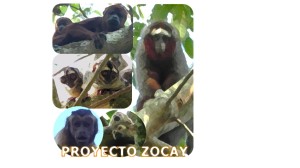
A few months ago, while I was talking with some students about publications and academy in general. I don’t remember thinking too much about this while I was studying, except by a few specific advice that one professor give me. I’m not so sure how much people ask about this because I had not been in an academic environment for a couple of years as my jobs are mainly outside of universities. However, it seems that it is not so clear for some of the young biologist, at least in Colombia. Each country probably has some variations of the following main points if you want to work in academy. The main objective is to work in a university as a professor. For this, in today’s world, one of the main requirements is to have at least a master, although in most universities today a doctorate is necessary. A second and probably the most important one in this academic system is to publish your work. You can start doing this before you finish your bachelor by working in a research laboratory or with one of your favorite professors from your career. Be proactive, ask questions, participate in their research activities and read a lot about your favorite topic or your favorite organism.Participate in conferences, start with the ones that are in your country or region and present your own research. Then, participate in Latin-American or international congresses focused on the topic of your interest. While in those conferences, participate in workshops, courses and do networking (talk with others about your research). I have to admit this last one (networking) is not my favorite and I’m probably not that go at it. It had costed me a lot of effort, its never easy for me to talk with new people, but it is really important in academy.Collaborate, this one also has cost me some effort, hopefully I’m becoming better at this. Talk with other about collaborations and share ideas to combine your data and expertise with others. Volunteer in research project, this will give you experience in topics of your interest with less money investment, at least in some projects.All these things cost money, something that probably make this difficult for most people in Global South. However, there are grants that cover most of this, look for them, take the time to search and read all the requirements and if you had at least one publication, grants become more and more feasible for you. Look for grants in universities’ websites as well as in government official sites. Most of the big conferences had grants to travel and present your research, look for them! Apply to as many as you can.One final advice, make sure you learn English, yes despite if you like it or not science is still done in English and in many countries (with or without English as their main language) English is the language to apply for many grants and fellowships. There are grants that include some months to learn the local language, so that should not be and excuse to apply. And if you don’t get it in your first try, apply again. I must wait 10 years to get a grant to make my doctorate and there were many rejections before that. So, if you really want to make your career in academy, be persistent and apply to as many grants as you can and publish good science as much as you can.If you want to support our activities, please visit https://fineartamerica.com/art/xyomara+carretero or get in contact with us at xcarretero@gmail.com if you want to collaborate, donate or volunteer in our activities. You can also support our activities by buying our ornate titimonkeys stuff dolls https://www.instagram.com/p/Ctm_sEORvk8/?igshid=MzRlODBiNWFlZA== and our new journals in Amazon https://www.amazon.com/X-Carretero/dp/B0CWD1DBJM/ref=mp_s_a_1_1?© Copyright Disclaimer. All pictures used on this web page are protected with copyrights to Xyomara Carretero-Pinzón. If you want to use any of these pictures, please leave a message on the website.


